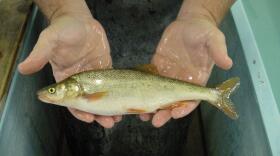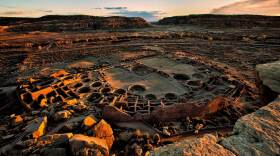The West’s pioneer spirit characterizes not only many of the region’s people, but also some of its plants. And a trio of pioneer species collectively called fire mosses, known on every continent, may prove an excellent tool for repairing burned-over lands on the Colorado Plateau.
Walking a trail one day, Chris Ives noticed “blankets” of fire moss thriving in the White Mountains of eastern Arizona just a few months after the massive Wallow Fire in 2011. This sparked an idea: might these unassuming plants be employed in restoration after forest fires?
For his graduate work at Northern Arizona University, Ives conducted greenhouse and field experiments with fire mosses—learning the optimal conditions for their growth, and how they could be applied on the ground after a fire.
He discovered that they take well to bare soils heavy with ash, and seem to fare best on moister, north-facing locations at higher elevations. Once they’ve colonized a site, fire mosses help slow erosion and hold water. As a result, they kick-start a succession of grasses, shrubs, and trees in the most severely burned places.
Because they colonize quickly after a fire, and could be applied over wide areas, these mosses may be cost-effective accomplices in restoration efforts. Just when to plant them for best results remains a question.
But the idea of cooperating with these often overlooked plants appeals to Ives, a wildland firefighter himself. He sees them as the “ultimate” pioneer species, tough as they come and ready to do hard work on the land.







